
Roots of Ancient Egyptian Coiffure
The whisper of history often finds its most resonant echo in the quiet details of daily existence. For ancient Egyptians, hair, far from being a mere biological adornment, stood as a profound marker, a canvas upon which identity, belief, and social standing were meticulously inscribed. To truly comprehend the intricate dance between coiffure and societal position along the Nile, one must first look to the foundational ways hair was perceived and tended.
It was a tangible connection to the self, a testament to care, and a visible declaration of one’s place within a structured world. The earliest strands of human history reveal a persistent preoccupation with the scalp’s crowning glory, transforming natural fibers into expressions of belonging and aspiration.
From the dawn of dynastic rule, the natural hair, often a rich, dark hue, was considered a gift from the gods, requiring diligent attention. Its condition spoke volumes, not just of personal hygiene, but of access to resources and the leisure to maintain such a demanding aesthetic. The dry, arid climate of Egypt necessitated specific care practices to preserve hair’s vitality, leading to the early development of sophisticated balms and oils.
These substances, often derived from botanical sources or animal fats, served not only to moisturize but also to perfume, adding another layer to the sensory presentation of an individual. The meticulous grooming rituals, passed down through generations, solidified hair’s role as a visible extension of one’s personal and public persona.
Hair in ancient Egypt transcended simple aesthetics, serving as a powerful visual language of identity, hygiene, and societal placement.

Hair’s Primal Connection to Identity
The very act of tending to one’s hair carried a deeply personal significance. It was a routine, a quiet moment of self-connection, yet its outcome bore immense public weight. The way one’s hair was styled or covered could convey age, marital status, religious devotion, or professional role. Consider the distinct shaven heads of priests, a practice signifying purity and dedication to divine service.
This stark absence of hair spoke as loudly as the most elaborate wig, signifying a spiritual elevation above earthly concerns and a direct conduit to the sacred. Such deliberate choices underscore a civilization that understood the profound semiotics of personal presentation.
The preservation of hair, even in death, speaks volumes about its enduring value. Mummified remains often reveal carefully preserved braids, sometimes still adorned with ornaments, suggesting a belief that the body, in its entirety, including its hair, would be made whole for the journey to the afterlife. This continuity of care, extending beyond the veil of mortality, highlights a cultural reverence for hair as an intrinsic part of the individual’s spiritual and physical integrity. It was not merely a fleeting trend but a lasting aspect of one’s being, deserving of eternal preservation.

Early Adornment and Material Choices
The ingenuity of ancient Egyptian artisans extended to the realm of hair adornment, utilizing a spectrum of natural materials available along the fertile Nile. From simple floral garlands to intricate beadwork, these embellishments were chosen with purpose, each material carrying its own inherent value and symbolic weight. The earliest forms of adornment were likely practical, holding hair in place, but quickly evolved into expressions of status and beauty.
- Clay and resin ❉ Used to create early hair extensions or to hold elaborate styles.
- Beads and shells ❉ Often strung into braids or used as decorative elements on wigs.
- Gold and lapis lazuli ❉ Reserved for the elite, signifying immense wealth and divine connection.
The choice of material for hair accessories often mirrored the social stratification of society. While commoners might adorn their hair with simple clay beads or dried flowers, the royal family and high-ranking officials would boast elaborate pieces crafted from precious metals and gemstones. These distinctions were not subtle; they were bold declarations, visible to all who observed. The craftsmanship involved in creating these pieces also reflected the economic standing of the wearer, with finer, more detailed work reserved for those with the means to commission skilled artisans.

The Nile’s Influence on Hair Perception
The life-giving waters of the Nile shaped every facet of ancient Egyptian existence, including their perception of beauty and cleanliness. The constant availability of water facilitated regular bathing and hair washing, practices that were not universally common in other ancient civilizations. This emphasis on hygiene meant that well-kept hair was not just a luxury but a baseline expectation, particularly among the upper echelons of society. The contrast between a clean, styled coiffure and unkempt hair would have been stark, serving as an immediate visual cue of one’s standing.
The agricultural bounty of the Nile Valley also provided many of the ingredients for hair care products. Oils from castor beans, moringa, and flax were extracted and blended with aromatic resins to create nourishing and fragrant preparations. These natural resources allowed for a level of hair maintenance that was both practical and luxurious, further cementing the connection between access to resources, personal care, and social distinction. The very environment supported and reinforced the cultural emphasis on a polished appearance, making hair a significant part of this public presentation.

Ritual of Daily Coiffure
Stepping beyond the foundational understanding of hair’s significance, we encounter the daily rhythms and ceremonial acts that transformed natural strands into a profound social statement. The practices surrounding hair in ancient Egypt were not merely acts of grooming; they were rituals, deeply ingrained routines that shaped public perception and reinforced hierarchical structures. These acts, from the simple washing to the donning of elaborate wigs, speak to a sophisticated understanding of presentation and its power within society. For the Roothea community, exploring these ancient techniques offers a gentle reminder of the enduring human desire for expression through our hair, a desire that transcends millennia.
The commitment to hair care was a significant investment of time and resources, particularly for the elite. Archaeological findings and textual accounts reveal a wealth of combs, pins, razors, and containers for ointments, all testament to the widespread nature of these practices. The act of washing, oiling, and styling was often a communal or assisted activity, particularly for those with the means to employ servants. This daily engagement with hair, far from being a private affair, became a public display of one’s ability to afford such dedicated attention.
Ancient Egyptian hair care, from daily grooming to wig creation, served as a tangible expression of social standing and access to resources.

Daily Hair Care Practices
The morning routine for many Egyptians, especially those of higher standing, likely began with a meticulous cleansing and conditioning of the hair. While soap as we know it did not exist, natron (a naturally occurring salt mixture) and various plant extracts were used for their cleansing properties. Hair was then often conditioned with rich oils to protect it from the dry climate and add luster. These oils were sometimes infused with fragrant herbs and flowers, serving as an early form of perfume.
Combs made from wood, bone, or ivory were common tools, used to detangle and smooth the hair. For those who kept their natural hair, braiding was a prevalent style, offering both practicality and aesthetic appeal. Intricate braids, often numbering in the hundreds, were a common sight, showcasing the patience and skill involved in their creation. Such elaborate natural styles would have required significant time, a luxury only available to those free from manual labor.

Wig Crafting as an Industry
Perhaps the most striking aspect of ancient Egyptian hair practices was the widespread use of wigs. These were not mere fashion accessories; they were essential components of formal attire, hygiene, and social signaling. Wigs were crafted from human hair, plant fibers, or even wool, and meticulously styled into a vast array of forms. The creation of these pieces was a specialized craft, indicating a dedicated industry.
The wig-making process was laborious. Strands of hair or fiber were often attached to a mesh cap made of plant material, using beeswax or resin as an adhesive. They were then styled, curled, and sometimes dyed.
The quality, size, and complexity of a wig directly correlated with the wearer’s status. Royal and elite individuals sported large, elaborate wigs, often adorned with gold rings, beads, or other precious materials, signifying their immense wealth and power.
Consider the different levels of wig complexity and material.
| Wig Type Simple Skullcap Wig |
| Materials Vegetable fibers, coarse human hair |
| Associated Social Standing Commoners, servants, lower-ranking officials |
| Wig Type Shoulder-Length Bob Wig |
| Materials Finer human hair, sometimes mixed with plant fibers |
| Associated Social Standing Middle-class individuals, minor scribes, artisans |
| Wig Type Long, Braided Wig with Curls |
| Materials High-quality human hair, often dyed and perfumed |
| Associated Social Standing Elite, high officials, priests |
| Wig Type Large, Multi-layered Ceremonial Wig |
| Materials Finest human hair, often adorned with gold and jewels |
| Associated Social Standing Pharaohs, queens, highest nobility |
| Wig Type Wig complexity was a direct visual indicator of an individual's place within the social hierarchy. |
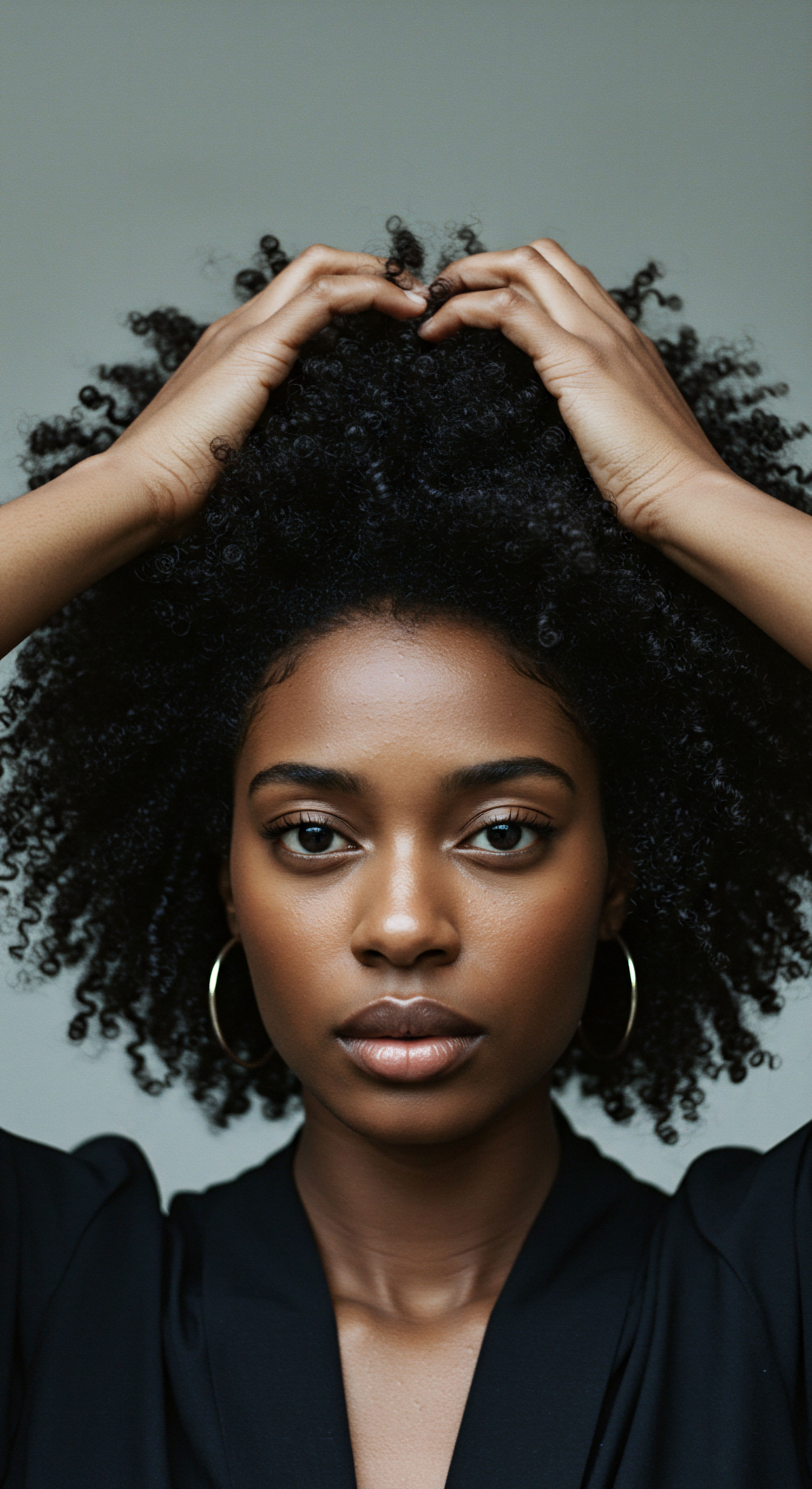
The Barbers and Stylists of Antiquity
The existence of such sophisticated hair practices points to a dedicated class of professionals ❉ barbers and wigmakers. These individuals possessed specialized skills, from shaving and cutting natural hair to meticulously crafting and styling wigs. For the upper classes, having a personal barber or stylist was a mark of luxury, ensuring their appearance was always impeccable. These professionals would not only manage natural hair but also clean, repair, and restyle the various wigs in their patrons’ collections.
Evidence suggests barbers were highly regarded, especially those serving the royal court or prominent families. Their role extended beyond mere grooming; they were privy to intimate details of their patrons’ lives and held a position of trust. The meticulous attention to detail required for creating the elaborate coiffures seen in tomb paintings and sculptures speaks to a high level of artistry and technical proficiency within this profession. Their skills were essential in maintaining the visual distinctions that underpinned ancient Egyptian society.
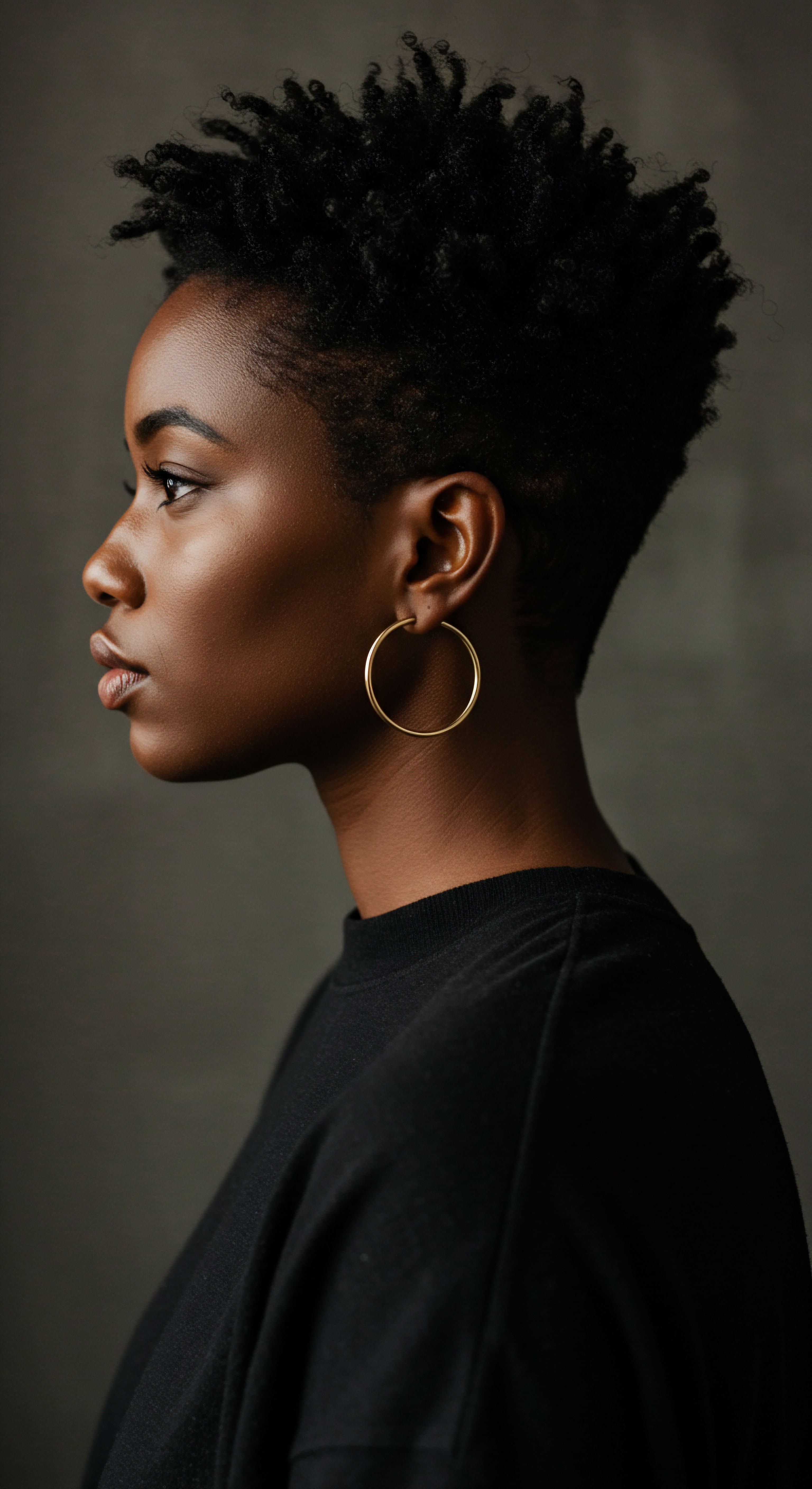
Relay of Social Signifiers
Having explored the foundational significance and the ritualistic daily practices, we now move to the profound interconnections between ancient Egyptian hair practices and the intricate web of social stratification. How precisely did a coiffure, a wig, or even the absence of hair, serve as a potent, immediate signifier of one’s standing within this ancient civilization? This section delves into the deeper cultural and economic currents that transformed hair from a personal attribute into a public declaration of power, wealth, and identity. It is here that the intersection of personal care, artistic expression, and societal structure truly comes into focus, offering a nuanced glimpse into the visual language of ancient Egypt.
The visual rhetoric of ancient Egypt was undeniably powerful, and hair played a central role in this non-verbal communication. Every aspect, from length and texture to the presence of specific adornments, contributed to a complex system of cues understood by all. The ability to maintain a certain hairstyle, or more significantly, to own a collection of elaborate wigs, was a direct reflection of economic capacity and social freedom. Those who labored in the fields or performed manual tasks would find long, elaborate styles impractical, thus reinforcing the distinction between classes.
Hair and wig styles in ancient Egypt functioned as a sophisticated visual code, communicating an individual’s wealth, status, and societal role.
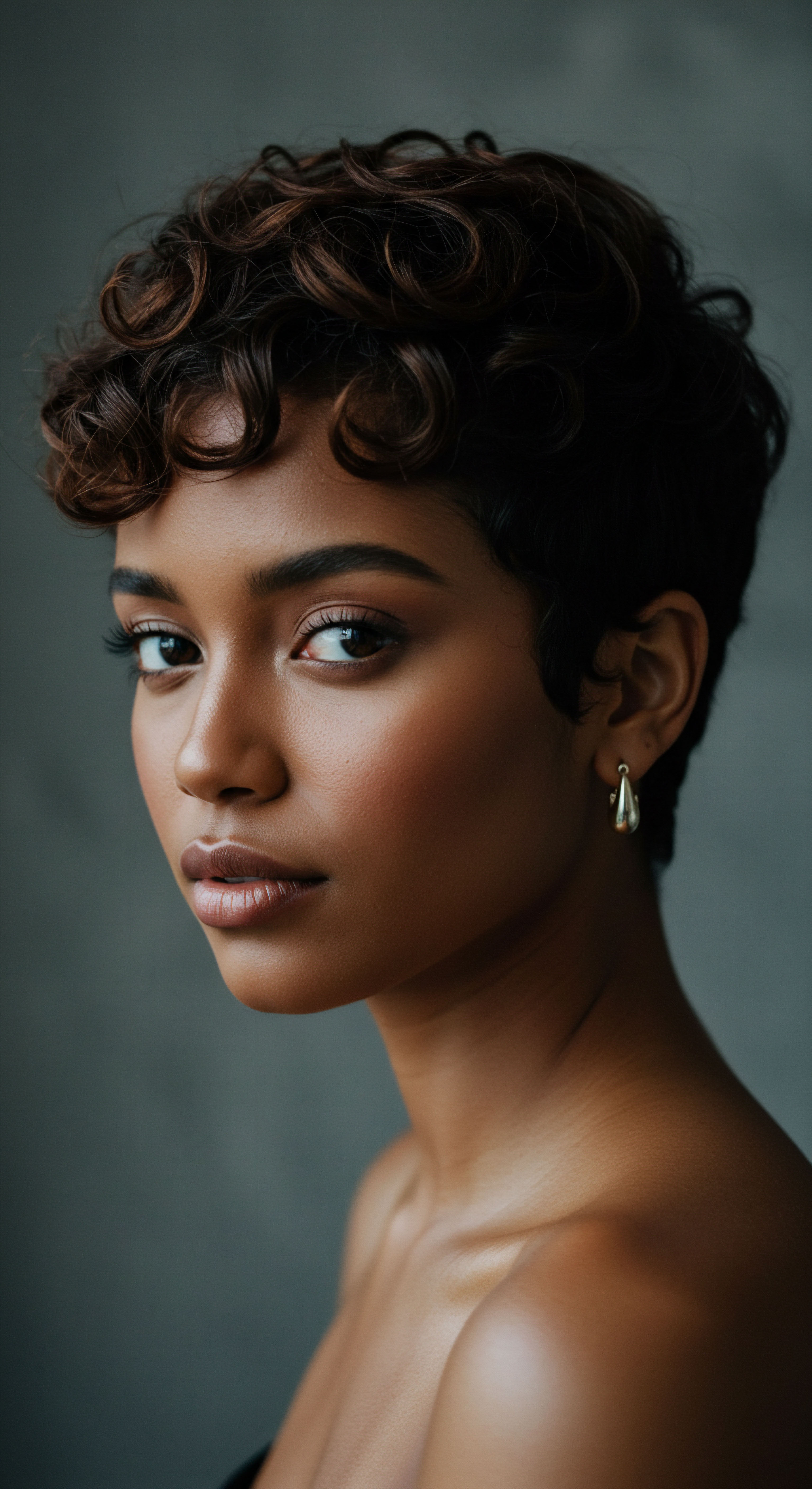
Symbolism of Coiffure
Beyond mere aesthetics, ancient Egyptian coiffures were imbued with layers of symbolism. The clean-shaven head of a priest symbolized purity and a dedication to the divine, setting them apart from the general populace. Children, both male and female, often wore a single side-lock, known as the “lock of youth,” which was eventually shorn upon reaching puberty, marking their transition into adulthood. This cultural practice provided a clear visual cue for age and developmental stage.
For women, certain styles, particularly those featuring long, flowing braids or elaborate tiered wigs, were associated with fertility, beauty, and high social standing. The famous “tripartite” wig, often depicted on noblewomen and goddesses, conveyed an aura of elegance and timeless beauty. Men, too, had distinct styles, from short, neatly cropped hair to elaborate, curled wigs that mimicked the natural hair but offered a more refined, controlled appearance. These visual conventions were so deeply embedded that they formed a common lexicon, immediately conveying information about the wearer.

Royal Hair Versus Commoner Hair
The distinction between the hair practices of the royal family and common citizens was stark and unambiguous. Pharaohs and queens wore the most opulent and meticulously crafted wigs, often incorporating elements of gold, lapis lazuli, and carnelian. These weren’t simply beautiful; they were statements of divine right and unparalleled wealth.
For example, the discovery of Queen Hetepheres I’s tomb (mother of Khufu, builder of the Great Pyramid) revealed fragments of what are believed to be her actual hair, carefully styled and perhaps even used in a wig. The meticulous preservation of such details speaks to the extreme importance placed on royal appearance.
Conversely, commoners, particularly those engaged in physical labor, often wore their natural hair short or shaved for practicality and hygiene. If they wore wigs, these would be simpler, smaller, and made of less costly materials like vegetable fibers. The sheer contrast in the resources required to maintain these differing styles—from the labor of wigmakers to the cost of materials and perfumed oils—served as a constant, visible reminder of the rigid social hierarchy.
Consider a compelling, yet often overlooked, aspect of ancient Egyptian hair ❉ the practical challenges faced by all, regardless of rank. While elaborate coiffures spoke of status, even the highest echelons contended with pervasive issues. A study published in the Journal of Archaeological Science in 2012, analyzing the hair of mummified individuals from various social strata across different periods, revealed a striking uniformity ❉ the widespread presence of head lice eggs (nits) on almost all samples, including those from elite burials.
This suggests that despite meticulous grooming, access to resources, and elaborate wig use, infestations were a common reality for everyone in ancient Egypt. This finding offers a powerful counterpoint to the idealized images of pristine hair seen in art, highlighting a shared human vulnerability that transcended social divides, even as outward appearance was meticulously controlled to signal status.
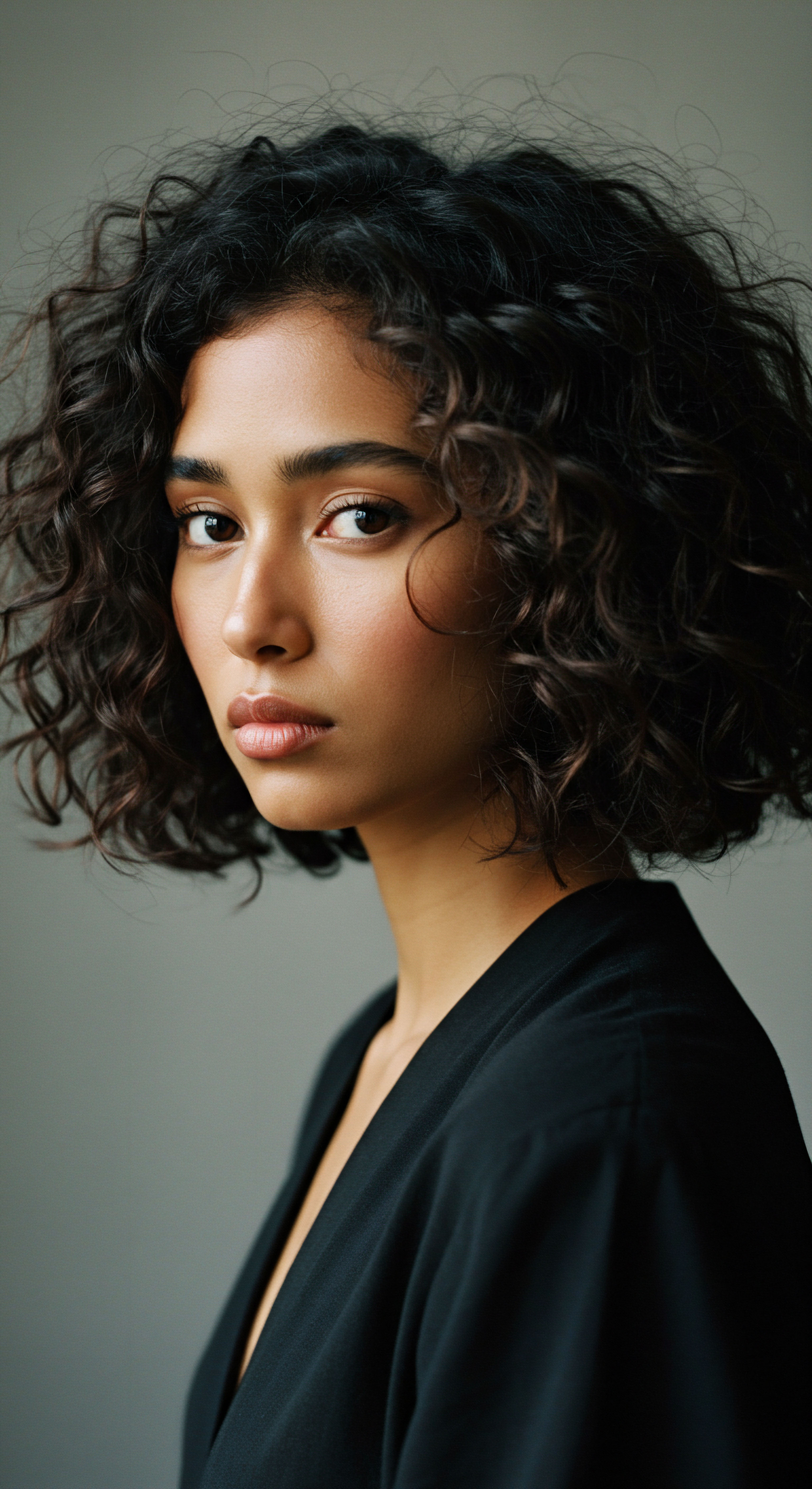
The Economics of Elaborate Styles
The creation and maintenance of elaborate hair and wig styles represented a significant economic investment. The human hair used for wigs was a valuable commodity, either sourced locally or imported. The artisans who crafted these pieces were skilled laborers, and their services would have commanded a high price. Beyond the initial cost, wigs required regular cleaning, re-styling, and repair, creating an ongoing demand for specialized labor and materials.
The materials for adornment also spoke to economic standing. Gold and precious stones were exclusively for the wealthiest, while glass beads or painted clay would be used by those of lesser means. The practice of applying unguent cones, often depicted in banquet scenes, further illustrates this economic dimension.
While archaeological evidence for their physical presence is less common than their artistic representation, chemical analyses of residues on some mummified heads suggest they were indeed used, composed of animal fat and resin, which would slowly melt, perfuming and conditioning the wig or natural hair. This luxurious, ephemeral adornment was another signifier of access to costly perfumed fats and the leisure to wear them.
- Wig acquisition ❉ Costly human hair or fine plant fibers.
- Artisan labor ❉ Highly skilled wigmakers and barbers.
- Adornment materials ❉ Precious metals, gemstones, or costly imported beads.
- Maintenance ❉ Ongoing cleaning, re-styling, and perfuming with expensive oils.
The visual disparity in hair practices was thus a deeply embedded system, where every braid, every curl, and every ornament contributed to a public declaration of one’s place within the societal order. It was a silent, yet universally understood, language of power, privilege, and belonging in the land of the pharaohs.

Reflection on Ancient Hair’s Echo
As we step back from the intricate world of ancient Egyptian hair, a profound realization settles ❉ the human impulse to adorn, to express, and to signify through our hair is a timeless echo. The elaborate wigs and meticulous braids of the Nile Valley, far from being mere historical curiosities, serve as powerful reminders that our relationship with our hair has always been, and remains, deeply intertwined with our identity and our place in the world. They compel us to consider the quiet stories our own strands tell, the heritage they carry, and the subtle ways they continue to speak volumes about who we are and where we stand. The enduring legacy of these ancient practices invites us to look upon our own hair, particularly textured hair, not just as a biological feature, but as a living testament to culture, history, and personal narrative, deserving of reverence and understanding.
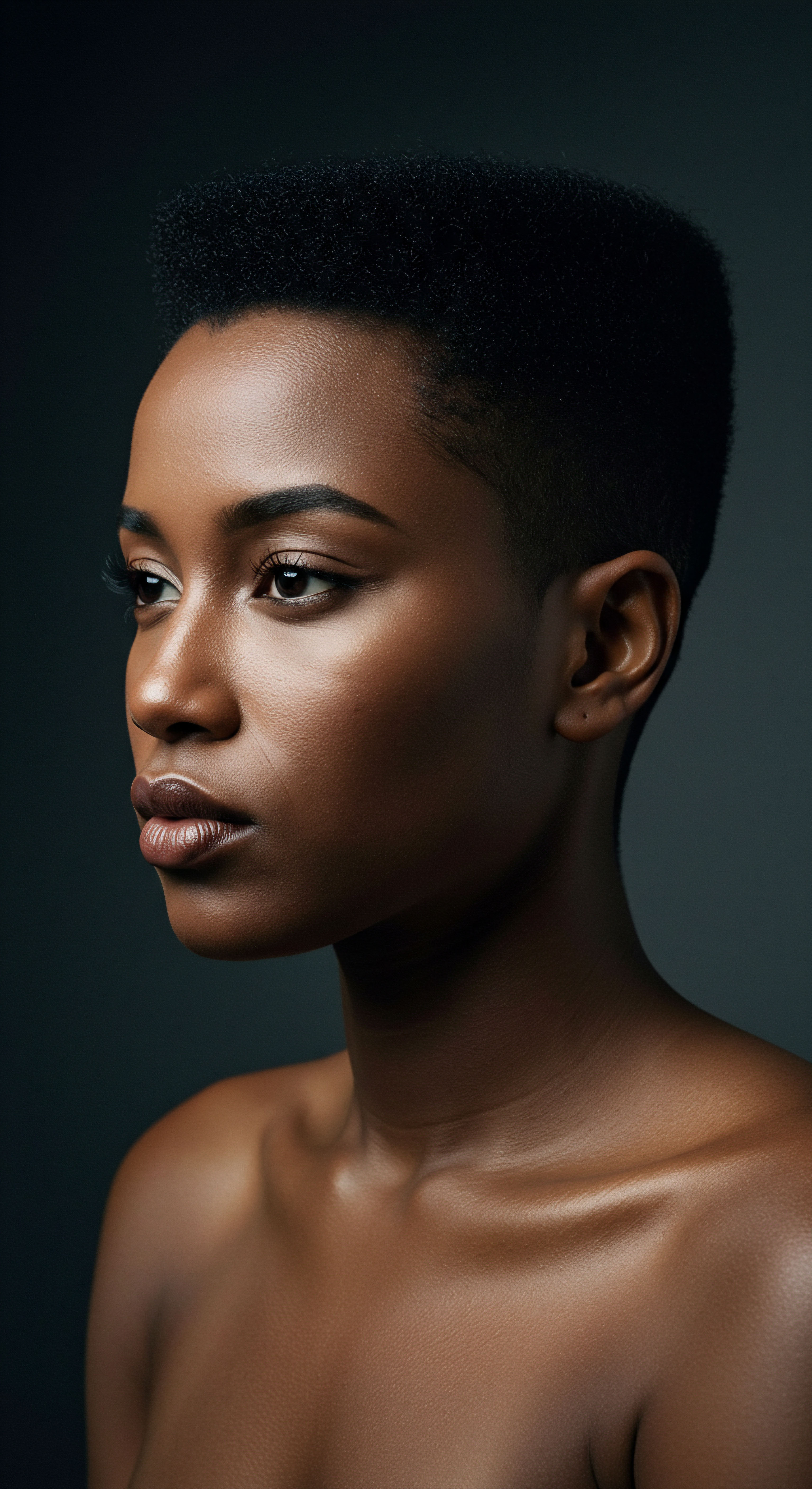
References
- Fletcher, Joann. Cleopatra the Great ❉ The Woman Behind the Legend. HarperCollins, 2008.
- Ikram, Salima, and Aidan Dodson. The Mummy in Ancient Egypt ❉ Equipping the Dead for Eternity. Thames & Hudson, 1998.
- Germer, Renate. Ancient Egyptian Hair ❉ A Hairdresser’s Perspective. Verlag Philipp von Zabern, 2001.
- Robins, Gay. The Art of Ancient Egypt. Harvard University Press, 1997.
- Mann, A. E. et al. “A systematic survey of head lice (Pediculus humanus capitis) infestation in ancient Egyptian and Nubian mummies.” Journal of Archaeological Science, vol. 39, no. 1, 2012, pp. 161-168.
- Stevenson, Alice. The Petrie Museum of Egyptian Archaeology ❉ A Guide to the Collection. UCL Press, 2015.
- Shaw, Ian, and Paul Nicholson. The British Museum Dictionary of Ancient Egypt. British Museum Press, 2008.